Yearly comprehensive eye exams are crucial to detecting changes in your vision and risk of eye-related diseases. We recommend adults have a comprehensive eye exam every year, and children should have an eye exam as early as six months before they start school, and then every 1-2 years. We often get questions about what to expect from your eye exam, so we’ve created an overview of the parts of a typical eye exam.
Eye Exams: What to Expect
Eye exams are quick and painless!
Who gives an eye exam? An optometrist will perform your eye exam. Optometrists are eye doctors who prescribe glasses, contacts, vision therapy, and medication to treat eye diseases.
Choosing eyewear? Following your exam, one of our staff opticians will help you select a pair of eyewear. An optician will ask you about your lifestyle to determine which eyewear is best for you as well as fit, adjust, and repair your eyeglasses.
What to expect during your appointment?
Your eye exam may take an hour or more based on the tests your eye doctor determines are needed to evaluate your eye health. Your eye exam may consist of the following tests.
Pre-Exam Tests
Before your exam, a technician will often perform a few basic tests, including:
- During a color sensitivity test, we will ask you to look at colored circles or shape and simply read the letter or number you see within it.
- For a peripheral vision test, we will place an object in your peripheral vision and ask that without moving your eyes if you can see the item displayed.
- The glaucoma (or “air puff” test) is commonly the most uncomfortable testing during your exam. For this test, the technician will puff a small bit of air into your eye to measure your eye pressure. There is no direct contact between the technician or machine and your eye and should only result in some watery eyes following.
Your Eye Exam
To prepare for your exam, bring your most recent pair of eyeglasses or contact lenses. Remember also to bring a list of questions or concerns you may have about your eyesight to discuss with your eye doctor.
Pupillary Reaction
Using a light, the doctor checks your pupils’ responsiveness. Your pupils’ response to light is a natural function of the eye and is critical to your vision. While using the light, the doctor will also look at the surface of your eye for signs of dry eye, corneal scratches and bacterial debris.
Slit Lamp Test
A slit light test is when your doctor shines a vertical bar of light into your eye to magnify its surface and inspect for abnormalities. This test allows the doctor to check your cornea, iris, and lens. During this test, you may be asked to blink or look in a specific director to allow your doctor to view your eye’s surface.
Visual Acuity and Refraction
The most well-known part of the eye exam is the visual acuity test. Your doctor will ask you to read an eye chart filled with numbers and letters with one or both eyes. Your ability to clearly read and identify the numbers and letters helps the doctor further determine your vision prescription needs. To hone in on your exact prescription, your doctor will place a large lens refractor in front of you and ask you a series of questions about which lenses make your vision better or worse.
Pupil Dilation
We recommend getting a dilated eye exam every year! By dilating your eyes, your doctor can more clearly examine your retina and optic nerve. To dilate your eyes, your doctor will place a few eye drops in your eyes to cause your pupils to enlarge. After a dilated exam, your eyes may be sensitive to light for up to an hour after the test. If you need a pair of temporary sunglasses, ask us, and we may be able to provide you one for comfort while driving home.
What to do after the exam?
Shop our selection of eyewear to find the perfect pair for your lifestyle. An optician for our team will be available to walk you through this process. Finally, schedule your follow-up appointment for the next year!

